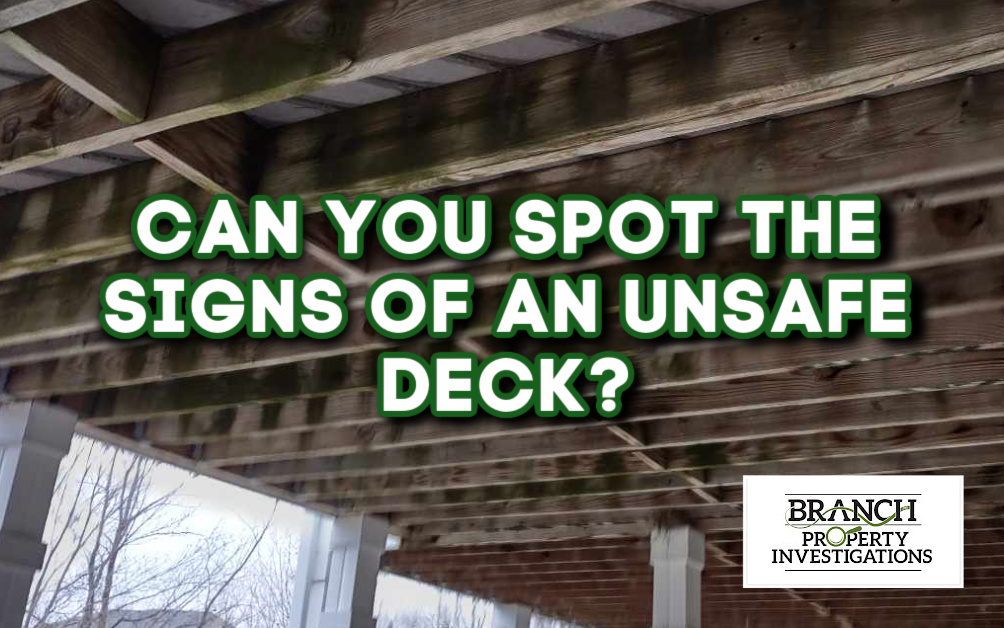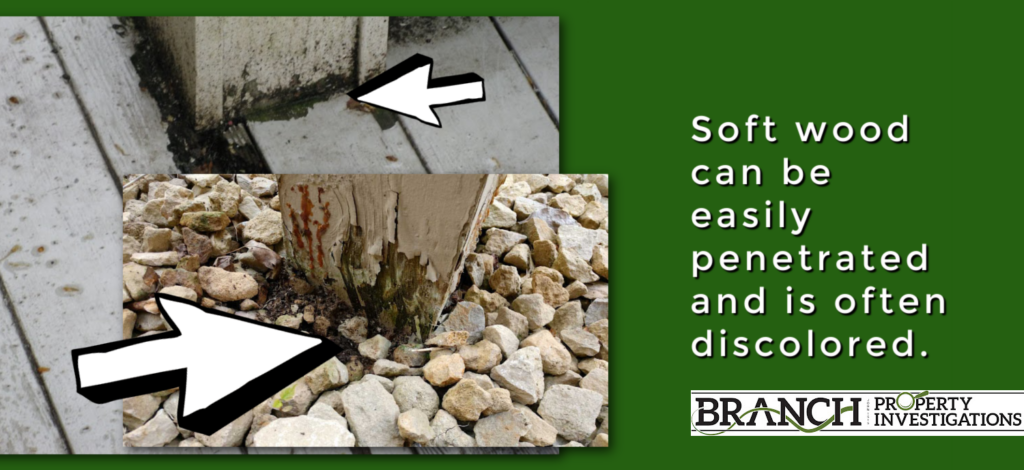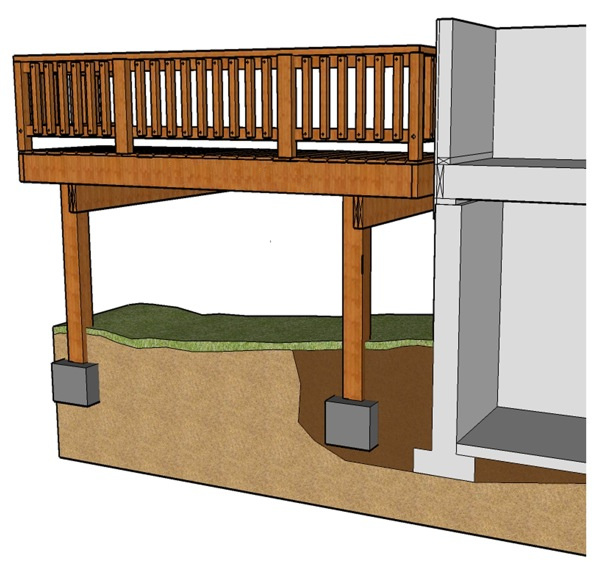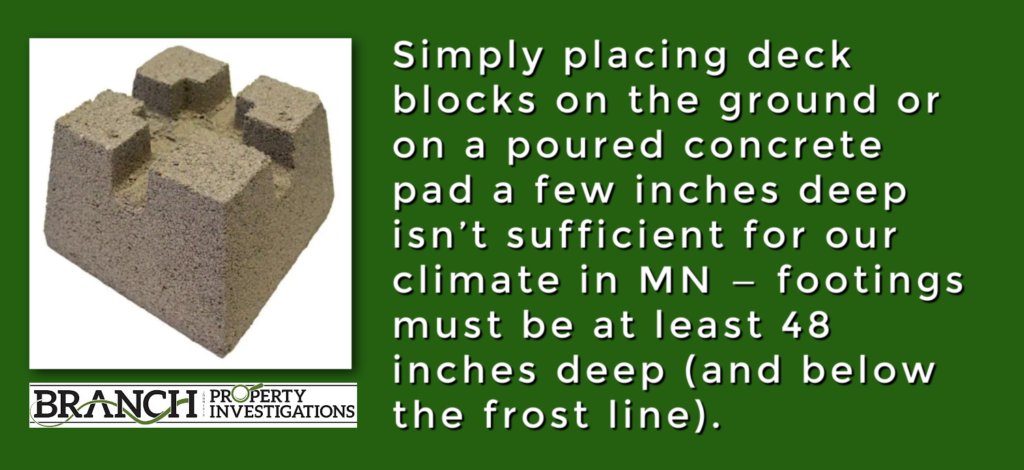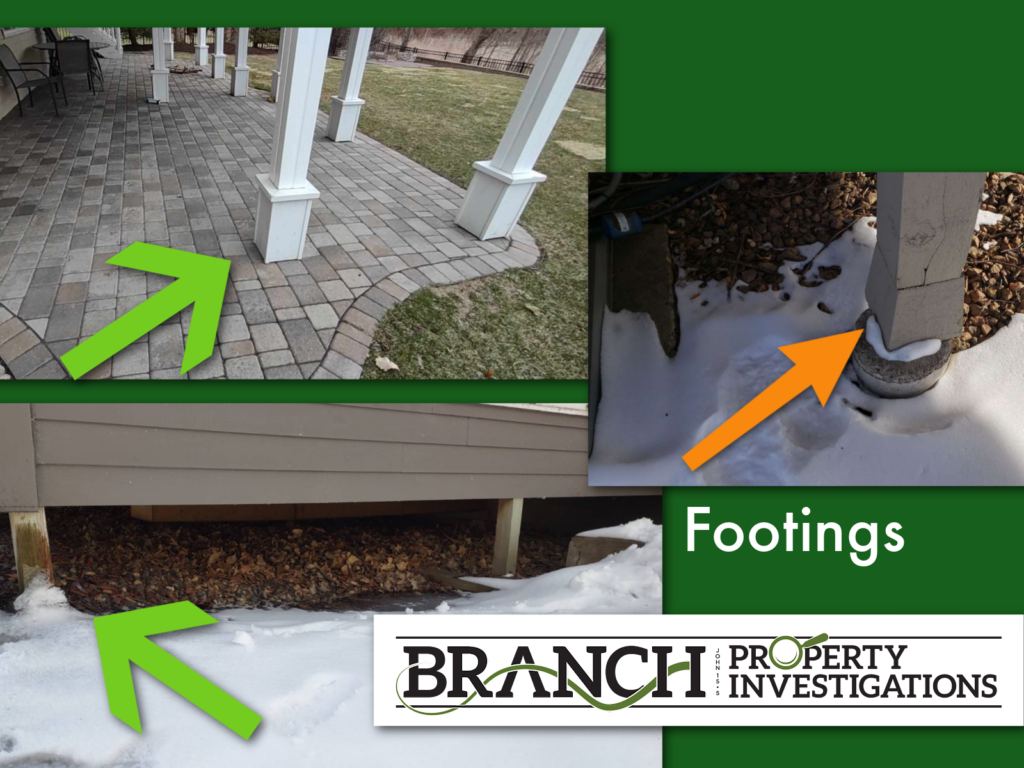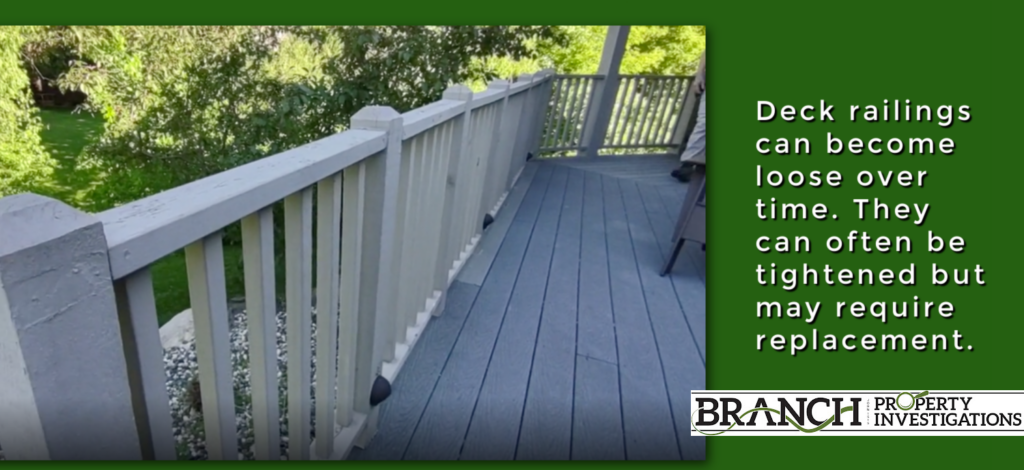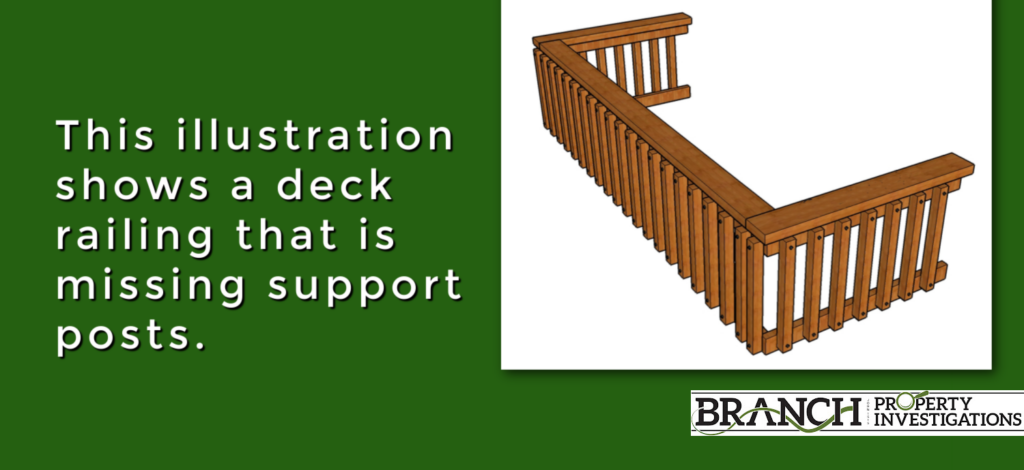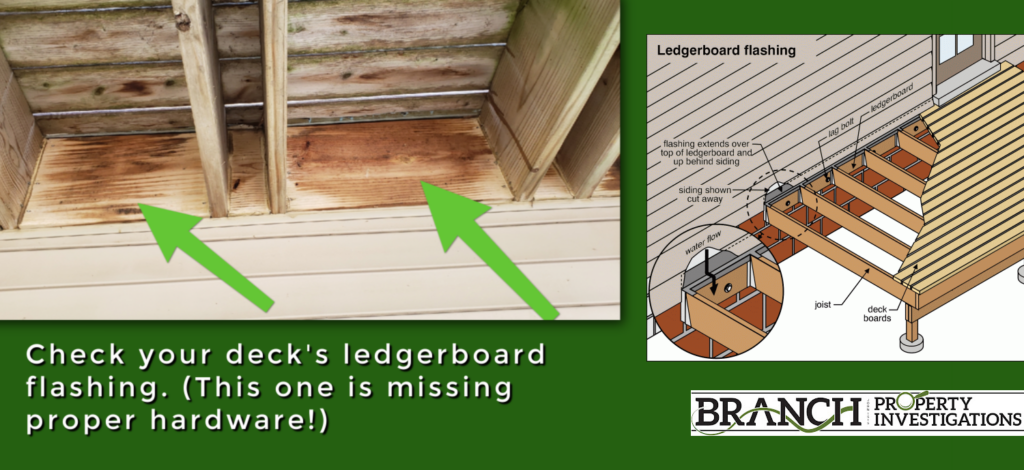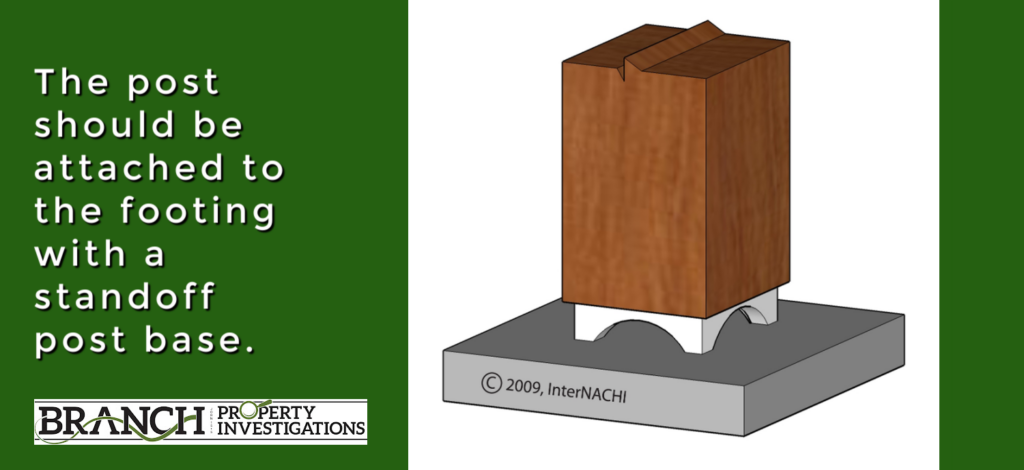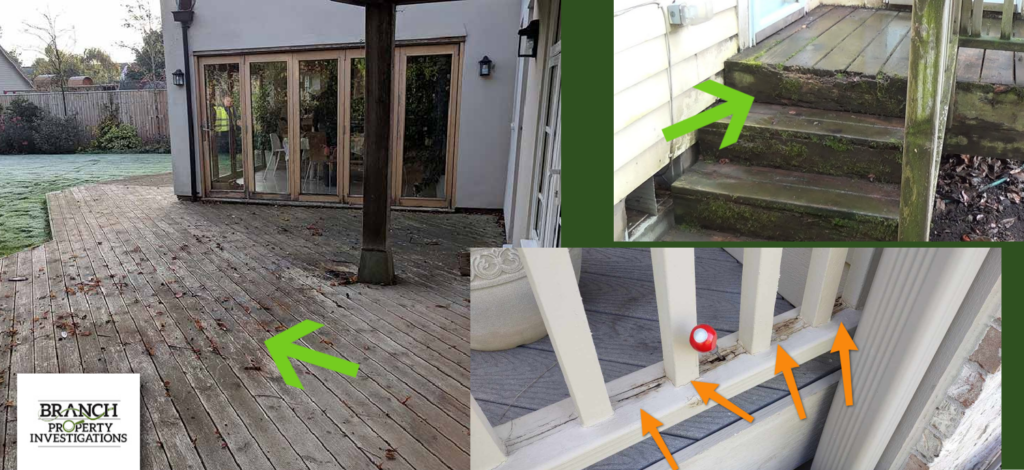Summer is upon us which means it’s time to do a deck check! Today we’re going to highlight the specific areas you should pay close attention to before you invite friends and family over for that backyard barbecue!
Be on the lookout for:
Rotted Posts
If your deck is sitting on rotted posts, it may not be able to support the weight of the deck much longer. Older decks have a higher chance of rotting because the posts sit directly on the footings, causing them to soak up moisture. Newer post bases elevate the post off the footing so there is not direct contract, but the older decks didn’t use that style of post base.
You can check for rot by probing around the posts, stair stringers, and decking surface; soft wood can be easily penetrated and is often discolored. Small areas of rot may be removed with a chisel; you can apply a thick coat of sealer to the exposed area to buy some time. Larger areas of rot will require wood replacement. If you’re uncertain, it’s best to replace the post.
Unstable Deck Boards
If any of your deck boards wobble when you walk on them, the joists have likely pulled away from the ledger or the joists may have weakened over time. Don’t let deck boards that wobble or squeak go unnoticed as weak deck boards can indicate a serious safety hazard.
Investigate to make sure the structure is intact and the ledger is properly attached to the house structure. If the deck structure checks out, a handy person can re-secure or replace deck boards; for larger jobs you may wish to reach out to a professional deck contractor.
Unstable Footings
When deck footings aren’t poured deep enough, they can heave in our climate. Sandy, well drained soils aren’t particularly susceptible to frost heave, while soils with higher clay content are prone to frost heave. This is why it’s so important for deck footings to extend down below the frost line. The frost line in our climate is typically about 48” deep. Some styles of above-ground footings can cause major stress on decks leading to failure as they move year after year as the ground heaves/settles.
Precast blocks available at home improvement centers are usually 12 inches square and 8 to 12 inches high.
Here are a few examples of various deck footings from inspections we’ve done this past year:
Loose Railings
Shaky railings are a safety hazard and should be repaired as soon as possible – especially if you have young children. Railing posts attached by nails only will eventually come loose. Replace the nails with carriage bolts, washers, and nuts to ensure the railing is secure.
Investigate the post to deck attachment to make sure that hardware with sufficient grip strength keeps the post secure. Support posts for the railing should be no further apart than 6 feet on a deck with 4×4” deck rail posts and no more than 8 feet apart for decks with 6×6” deck rail posts.
Additionally, railings should be able to resist a 200 pound point load anywhere along the railing.
No Ledger Flashing
The ledger board is a critical structural element for your deck – it connects the deck to the frame of the house. The ledger flashing prevents water from seeping into the space between your deck and home. Ledger flashing also limits the amount of water that contacts the top of the ledger. Without ledger flashing, the ledger and components behind it can rot and give the deck a higher chance of collapsing.
Deck Attachment Hardware
A properly built deck will have connecting hardware at each connection point in the deck structure. The post should attach to the footing with a standoff post base. The joist should attach to the post and ledger with joist hangers and clips. New requirements call for the ledger to attach to the rim joists or other house structural members with deck tension ties to even better strengthen the deck structure.
Structural Damage
Cracks don’t start off as structural problems but can get worse over time. Moss or algae left on deck boards over time can also cause lasting damage. Pay attention to any structural damage as it poses safety hazards. Rotted wood can cause the frame of the deck to sag, making it unsafe to walk on. Termites like wood and can cause serious structural damage to your deck. Learn to spot the signs of termites and protect your deck from wood-eating pests.
Safety First
We always recommend staying on top of necessary deck maintenance and repairs so your own family can safely enjoy the space. If you need added incentive, you can almost be certain the next home inspector who visits your property will investigate the deck, and point out any defects to potential buyers.
We wish you safe and joy-filled memories on your deck this summer!


